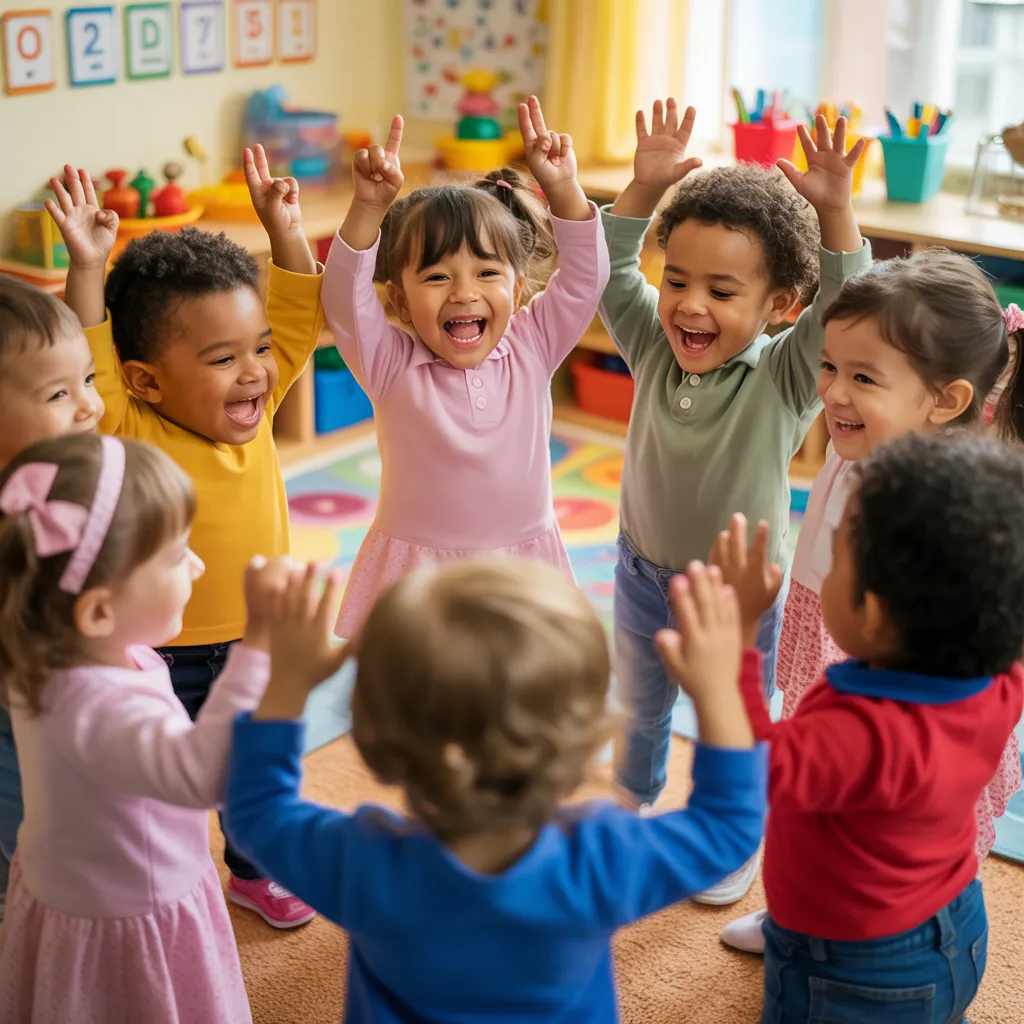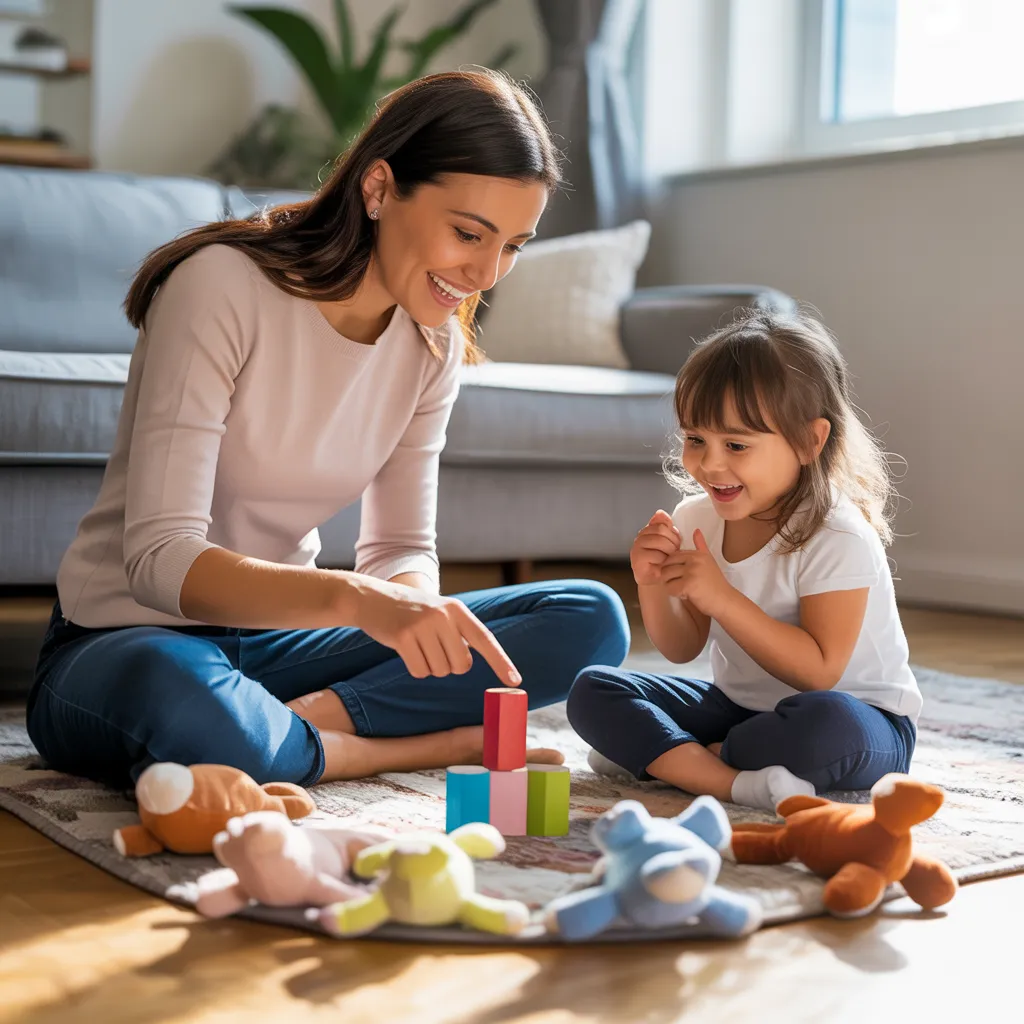Counting songs for children offer a uniquely effective pathway to early mathematical understanding through the universal languages of music and movement. These engaging, rhythmic learning tools transform abstract numerical concepts into memorable experiences that young minds eagerly absorb and retain. When children participate in counting songs, they naturally develop critical skills—number sequence, one-to-one correspondence, and cardinality—while experiencing the sheer joy of music. For parents and educators seeking to build strong mathematical foundations, counting songs provide a versatile resource that works across different learning environments, from structured classroom activities to spontaneous learning moments at home. The combination of melody, rhythm, and numerical content creates multisensory experiences that accommodate diverse learning styles and developmental stages. Unlike traditional drill methods, counting songs for children harness the brain’s natural affinity for musical patterns, creating neural pathways that support not just counting skills, but a positive, confident approach to mathematics that can benefit children throughout their educational journey.
The Developmental Benefits of Counting Songs for Children

Counting songs for children do far more than teach the basic number sequence—they develop multiple interconnected mathematical and cognitive skills through joyful musical experiences. When children regularly engage with counting songs, they develop:
- Sequential understanding: Learning the proper order of numbers through repeated melodic patterns
- One-to-one correspondence: Matching each number word to an object or action
- Cardinality: Understanding that the last number counted represents the total quantity
- Memory enhancement: Retaining numerical information through musical patterns
- Language development: Building mathematical vocabulary alongside counting skills
- Rhythm and pattern recognition: Developing foundational algebraic thinking through musical patterns
The Brain Science Behind Counting Songs for Children

Research in neuroscience reveals why counting songs are particularly effective learning tools. When children engage with counting songs, multiple brain regions activate simultaneously:
- Language processing areas interpret lyrics and number words
- Musical processing regions respond to melody and rhythm
- Motor cortex controls movement and gestures that often accompany songs
- Mathematical processing centers engage with numerical concepts
This simultaneous activation creates stronger, more resilient neural pathways than those formed through single-mode learning experiences. The emotional engagement that comes with music also triggers the release of dopamine—the « feel-good » neurotransmitter that enhances focus and memory formation—making counting songs for children powerful vehicles for mathematical learning.
Essential Counting Songs for Children by Age Group
Toddlers and Young Preschoolers (Ages 1-3)
For our youngest mathematicians, ideal counting songs for children feature:
- « Five Little Ducks »: A gentle counting-down song that teaches subtraction concepts
- « One, Two, Buckle My Shoe »: A classic rhyme pairing numbers 1-10 with simple actions
- « Five Little Monkeys Jumping on the Bed »: A subtraction song with engaging narrative
- « This Old Man »: A cumulative counting song building from 1-10 with playful verses
- « The Ants Go Marching »: A movement-based counting song perfect for active learners
These early counting songs should incorporate:
- Simple, clear number sequences (typically 1-5 initially)
- Repetitive, predictable patterns
- Engaging actions or finger plays
- Slower tempos for processing time
Older Preschoolers (Ages 4-5)
As children develop greater language and cognitive skills, beneficial counting songs include:
- « Ten in the Bed »: A backward-counting song with a repeating pattern
- « Five Green and Speckled Frogs »: A subtraction song with visual imagery
- « Ten Little Fingers »: A body-based counting song reinforcing one-to-one correspondence
- « The Counting Song » (by various artists): Forward counting with incremental challenges
- « Five Little Speckled Frogs »: A counting-down song with opportunities for dramatization
Early Elementary (Ages 6-7)
Children beginning formal education benefit from more complex counting songs:
- « Count by Twos »: Songs introducing skip counting concepts
- « The 100 Days of School Song »: Extended counting celebrating mathematical milestones
- « Addition Songs »: Tunes that incorporate simple addition facts through lyrics
- « Place Value Songs »: Musical explanations of tens and ones
- « Skip Counting Rap »: Rhythmic counting by 2s, 5s, and 10s

How to Maximize Learning with Counting Songs for Children
Implementation Strategies for Educators
To get the most educational value from counting songs for children:
- Incorporate Visual Supports: Pair songs with number cards, objects, or felt board pieces
- Add Movement Components: Create gestures or whole-body movements to reinforce concepts
- Extend with Questions: Pause songs to ask mathematical thinking questions
- Connect to Manipulatives: Follow up songs with related counting activities using objects
- Create Song Collections: Develop themed sets of counting songs for different concepts
Enhancing Home Learning with Counting Songs
Parents can integrate counting songs throughout daily routines:
- Morning Routine Songs: Count steps on the stairs or clothing items while dressing
- Mealtime Counting Tunes: Count plates, utensils, or food items with simple melodies
- Bath Time Number Songs: Use water-safe counting props alongside bath songs
- Bedtime Counting Lullabies: Gentle counting songs as part of wind-down routines
- Travel Time Tunes: Use counting songs to make car rides educational and entertaining
Creating Custom Counting Songs for Children
Developing personalized counting songs doesn’t require musical expertise:
Adapting Familiar Melodies
Transform well-known tunes into counting experiences:
- « Twinkle, Twinkle » Adaptation: Replace standard lyrics with counting sequences
- « Row, Row, Row Your Boat » Counting Version: Incorporate numbers into the familiar melody
- « If You’re Happy and You Know It » Counting Edition: Add counting actions to this participatory song
- « The Wheels on the Bus » Number Version: Create counting verses for this popular tune
- « Baa Baa Black Sheep » Counting Adaptation: Modify to include counting elements
DIY Counting Songs with Household Items
Create homemade musical counting experiences:
- Pot and Pan Counting: Develop rhythmic counting using kitchen items as instruments
- Counting Shakers: Fill containers with different amounts of items to shake while counting
- Clapping Patterns: Develop simple clapping routines with numerical patterns
- Stepping Songs: Create songs that involve stepping or hopping specific numbers
- Counting Cleanup Tunes: Develop songs that incorporate counting during tidying routines

Digital Resources for Counting Songs for Children
While live singing provides optimal learning, quality digital resources can supplement these experiences:
- Educational YouTube Channels: Curated collections of engaging counting songs
- Interactive Counting Song Apps: Applications that combine music with visual elements
- Streaming Music Services: Specialized playlists of counting songs for different age groups
- Educational Websites: Resources offering both songs and complementary activities
- Virtual Music Classes: Online programs incorporating counting songs with expert guidance
Evaluating Quality in Digital Counting Songs
When selecting digital counting songs for children, consider these criteria:
- Mathematical Accuracy: Songs should present correct number sequences and concepts
- Age Appropriateness: Content should match developmental stages
- Engagement Factors: Melodies should be catchy and appealing to young listeners
- Educational Foundations: Songs should have clear learning objectives beyond entertainment
- Production Quality: Clear vocals and appropriate pacing enhance learning potential
Conclusion
Counting songs for children provide a joyful, effective pathway to early mathematical understanding. By combining the natural appeal of music with essential numerical concepts, these songs create multisensory learning experiences that children eagerly embrace. The key to success lies in selecting age-appropriate songs, implementing them consistently, and extending their concepts through complementary activities. Whether you’re using traditional counting rhymes passed down through generations or creating custom songs tailored to your child’s interests, counting songs offer a powerful tool for building mathematical foundations. Begin by incorporating a few simple counting songs into daily routines, then gradually expand your repertoire as your child’s skills develop. With regular, enthusiastic engagement in counting songs, children develop not just numerical fluency, but a positive relationship with mathematics that supports lifelong learning.
40 Essential Numbers 1-10 Worksheets That Build Strong Early Math Foundations
FAQ About Counting Songs for Children
Q: At what age should I start using counting songs with my child? A: You can begin introducing counting songs from infancy, even though babies won’t understand the numerical concepts initially. The rhythmic patterns and your engaging delivery build pre-mathematical foundations. By 12-18 months, many toddlers enjoy participating in simple finger plays like « Five Little Monkeys, » even if they can’t count independently. Around age 2-3, children typically begin to grasp the actual counting concepts in the songs, first through rote memorization and gradually with greater understanding.
Q: My child sings counting songs but still skips numbers when counting objects. Is this normal? A: Absolutely normal! Children typically master rote counting (reciting numbers in order) through songs before developing meaningful counting (applying numbers to objects with one-to-one correspondence). This developmental progression takes time. Continue using counting songs while also providing plenty of hands-on counting experiences with objects. Try slowing down songs occasionally and physically touching objects while singing the corresponding numbers to help bridge this gap. Most children develop accurate object counting between ages 3-5, even if they can recite numbers to much higher values through songs.
Q: Are there counting songs that teach more advanced math concepts beyond simple counting? A: Yes! As children master basic counting, you can introduce songs that teach skip counting (by 2s, 5s, 10s), addition, subtraction, place value, and even multiplication concepts. Many educational publishers and children’s musicians have created songs specifically addressing these more advanced topics. Look for terms like « skip counting songs, » « addition songs, » or « place value songs » when searching for resources. These more complex songs are typically most appropriate for children ages 5-8, though younger children with strong counting foundations may also enjoy them.
Q: How can I make counting songs more engaging for a child who seems uninterested? A: Personalization is key for reluctant participants. Try incorporating the child’s name, favorite animals, or interests into existing songs (e.g., « Five Little Dinosaurs » instead of « Five Little Ducks »). Add sensory elements like props, puppets, or instruments to increase engagement. Movement is particularly effective—create large motor actions like jumping or spinning that correspond with numbers. Sometimes timing matters too; match songs to the child’s energy level, using active counting songs during high-energy periods and gentler tunes during quieter moments. Consider the learning style as well—visual learners might need picture supports alongside songs, while kinesthetic learners need movement components.
Q: Can counting songs help children who are struggling with early math concepts? A: Absolutely! Counting songs can be particularly beneficial for children experiencing challenges with traditional mathematical instruction. The multisensory nature of music bypasses some learning barriers by providing alternative pathways to understanding. For children with working memory difficulties, the rhythmic patterns of songs create a scaffolding that supports number sequence recall. For those with language processing challenges, the predictable, repetitive nature of counting songs provides multiple opportunities to process the same information. The key is consistency and enjoyment—daily exposure to counting songs in a pressure-free, playful context allows struggling learners to absorb concepts gradually while building mathematical confidence.
